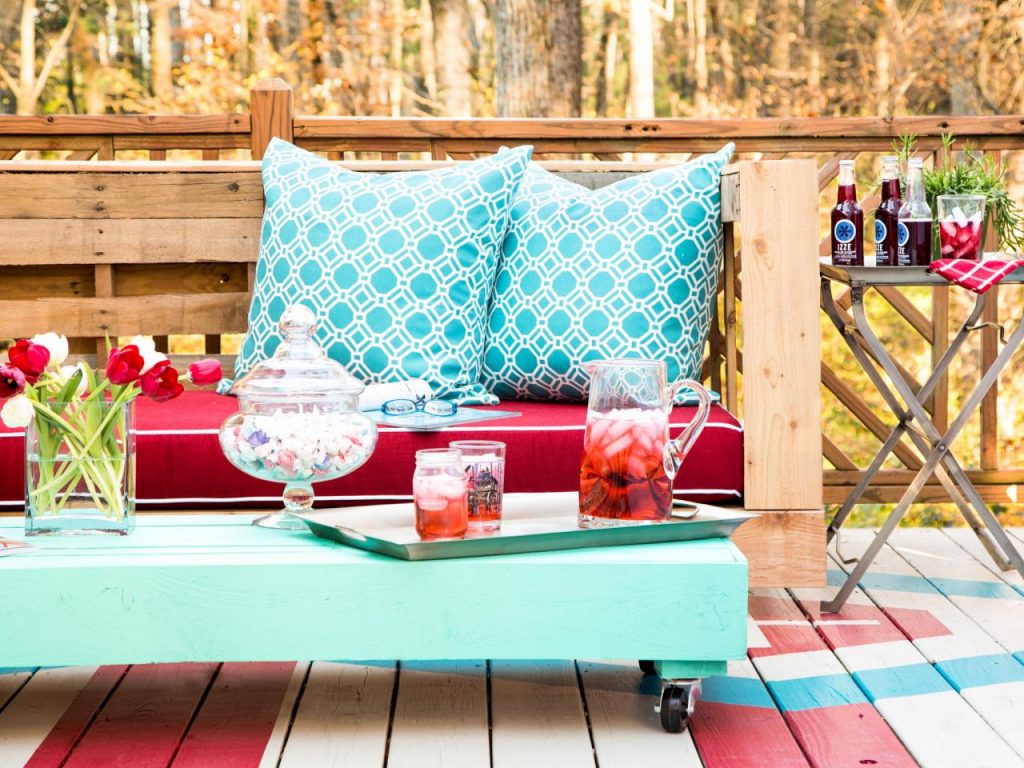Wachsende Minze in einem Topf - Lernen Sie, wie man Minze Pflanzen
Minze ist eine außerordentlich beliebte Pflanze, die man vielseitig einsetzen kann. Sie ist eine perfekte Dekoration, hat aber auch wertvolle Eigenschaften - Geschmack und Geruch. Dank dieser Eigenschaften ist die Minze eine perfekte Ergänzung zu Getränken, Salaten und verschiedenen Gerichten. In der Regel findet man getopfte Minze in Supermärkten. Aber ist es möglich, Minze selbst zu züchten? Natürlich ist das möglich - und es ist nicht schwer. Hier erfahren Sie, wie man Minze anbaut.

Eine Minzpflanze im Topf - warum ist sie so beliebt?
Die Minze ist eine der am weitesten verbreiteten Pflanzen. Sie ist der Menschheit schon seit dem Altertum bekannt. Damals entdeckte man die wertvollen Heilkräfte dieser Pflanze, und die Minze wurde zur Linderung von Magenproblemen und zur Beruhigung des Nervensystems eingesetzt. Interessanterweise ist eine getopfte Minzpflanze sowohl wirksam als auch mild - sie kann also unabhängig vom Alter verwendet werden. Sie ist für kleine Kinder und ältere Menschen ungefährlich.
Abgesehen von den gesundheitlichen Vorteilen wird eine Minzpflanze auch wegen ihres einzigartigen Geschmacks geschätzt. Sie ist sehr universell einsetzbar, so dass man sie als Ergänzung verwenden kann:
- verschiedene Heiß- und Kaltgetränke,
- Soßen,
- Salate.
Die Minzpflanze wird nicht nur in der Küche verwendet, sondern auch zur Hautpflege. Der Markt bietet immer mehr Produkte mit Minze an - man kann aber auch selbst Masken und Toner auf Minzbasis herstellen.
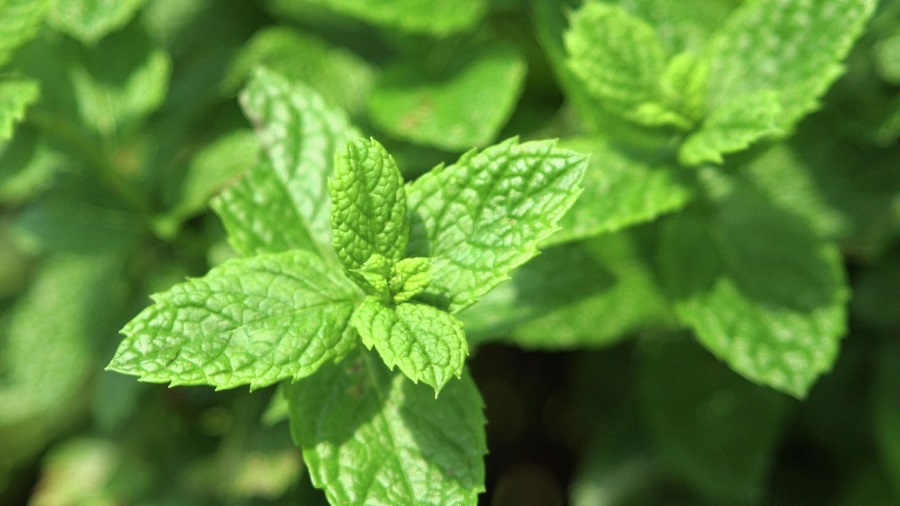
Growing mint indoors - Arten von Minze
Wer noch nie frische Kräuter in der Küche hatte, denkt vielleicht, dass es sich bei der Minze im Topf nur um eine einzige Art handelt, die immer gleich aussieht und schmeckt. Tatsächlich aber bietet der Markt viele Minzsorten. Außerdem haben sich einige Unternehmen auf den Anbau verschiedener Minzsorten spezialisiert.
Die Minze ist die häufigste Minzsorte. Es handelt sich um die Basissorte, die in der Regel von denjenigen gewählt wird, die ein normales Kraut in ihrem Haus anbauen möchten. Pfefferminze ist eine weitere beliebte Sorte - sie schmeckt viel ausgeprägter als Minze.
Andere interessante Minzsorten bieten unterschiedliche Geschmacksrichtungen, zum Beispiel:
- Schokoladenminze,
- Zitronenminze,
- Bananen-Minze,
- Apfel-Minze,
- Limetten-Minze,
- Ananas-Minze,
- Ingwer-Minze,
- Erdbeer-Minze.
Die genannten Minzsorten haben nicht nur einen originellen Geschmack, sondern auch ein besonderes Aroma. Einige Sorten haben auch verschiedene Farben.

Wie man Minze in einem Container anbaut - Grundbedürfnisse
Eine getopfte Minzpflanze benötigt besondere Bedingungen, um richtig wachsen zu können. Die Erde ist das wichtigste Element - sie sollte immer feucht sein. Der Platz für das Gefäß ist ebenso wichtig. Er darf nicht der vollen Sonne ausgesetzt sein. Die Pflanze bevorzugt Halbschatten, deshalb ist es ein Fehler, sie z.B. auf eine Küchenfensterbank zu stellen. Suchen Sie stattdessen ein anderes Regal in der Küche, auf das Sie den Behälter stellen können.
Was den Topf betrifft, so ist die Minze eine anspruchsvolle Pflanze. Das Gefäß sollte groß genug sein, damit die Wurzeln wachsen können. Das ist der Grund, warum im Supermarkt gekaufte Minze ziemlich schnell verwelkt oder vertrocknet. Solche Pflanzen werden meist in mikroskopisch kleinen Gefäßen verkauft. Wenn Sie eine solche Pflanze kaufen, denken Sie daran, sie umzutopfen, und vielleicht können Sie sie retten.
Der Boden des Behälters sollte mit Kies ausgekleidet werden. Auch Blähton ist für diesen Zweck gut geeignet. Dank ihm bleibt die Erde feucht, aber das Wasser steht nicht im Behälter.
Minzpflanzenpflege - Minze im Topf anbauen
Regelmäßiges Gießen ist die Grundvoraussetzung, wenn Sie Minze in einem Gefäß anbauen wollen. Wenn die Luft im Inneren des Behälters trocken ist, müssen Sie die Pflanze möglicherweise jeden Tag gießen. Im Winter können Sie die Blätter der Pflanze besprühen. Achten Sie aber darauf, dass Sie sie nicht übermäßig bewässern - sonst könnten die Wurzeln faulen.
Viele Menschen denken, dass Minze in Innenräumen nicht gefüttert werden muss. Aber das ist nicht ganz richtig. Wenn Sie die besten Ergebnisse erzielen wollen, sollten Sie den Boden von Zeit zu Zeit mit Nährstoffen düngen. Eine wirksame Lösung ist der Vermicompost.
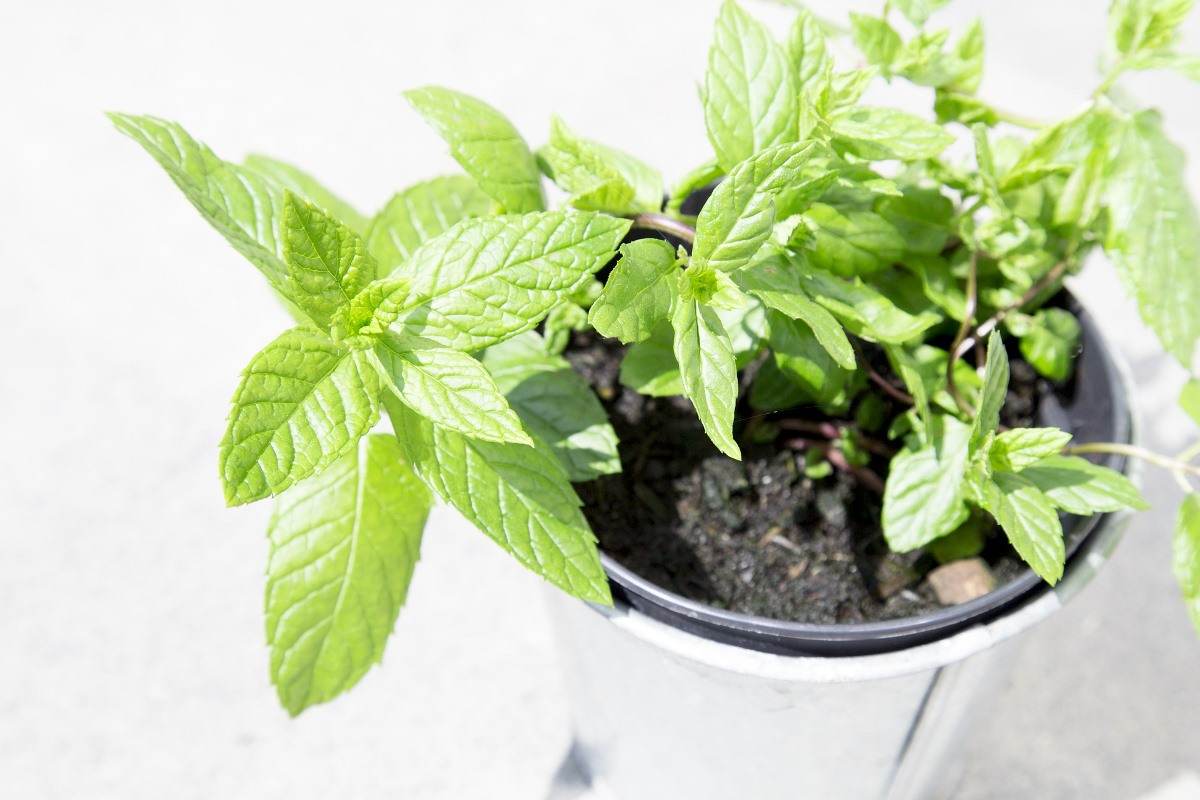
Wie erntet man Minze?
Man könnte meinen, dass die Ernte von Minzblättern keiner besonderen Anleitung bedarf. Aber es stellt sich heraus, dass viele Menschen es falsch machen. Das Ergebnis ist, dass die Minzpflanze nach einiger Zeit nur noch leere Zweige hat.
Wie erntet man Minze richtig? Pflücken Sie niemals nur die Blätter. Beginnen Sie immer mit dem oberen Teil der Pflanze, einschließlich der Stängel. So kann die Pflanze neue Zweige entwickeln.
Minze auf dem Balkon anbauen - ist das eine gute Idee?
Sie haben drinnen keinen Platz und fragen sich, ob Sie Minze in Kübeln auf dem Balkon anbauen können? Natürlich, aber Sie müssen ein paar Grundregeln beachten. Erstens: Wählen Sie einen guten Platz für die Pflanze. Minze im Topf mag keine pralle Sonne, deshalb kann sie nicht überall stehen. Ein Nord- oder Westbalkon ist die beste Wahl. Wenn Sie in dieser Hinsicht keine Wahl haben, sorgen Sie einfach dafür, dass die Pflanze etwas Schatten bekommt.
Genau wie beim Anbau einer Minzpflanze im Haus braucht die Minze im Topf auf dem Balkon ein gutes Gefäß. Er sollte groß sein. Denken Sie an die so genannte Drainageschicht am Boden - verwenden Sie kleine Steine oder Kieselsteine.
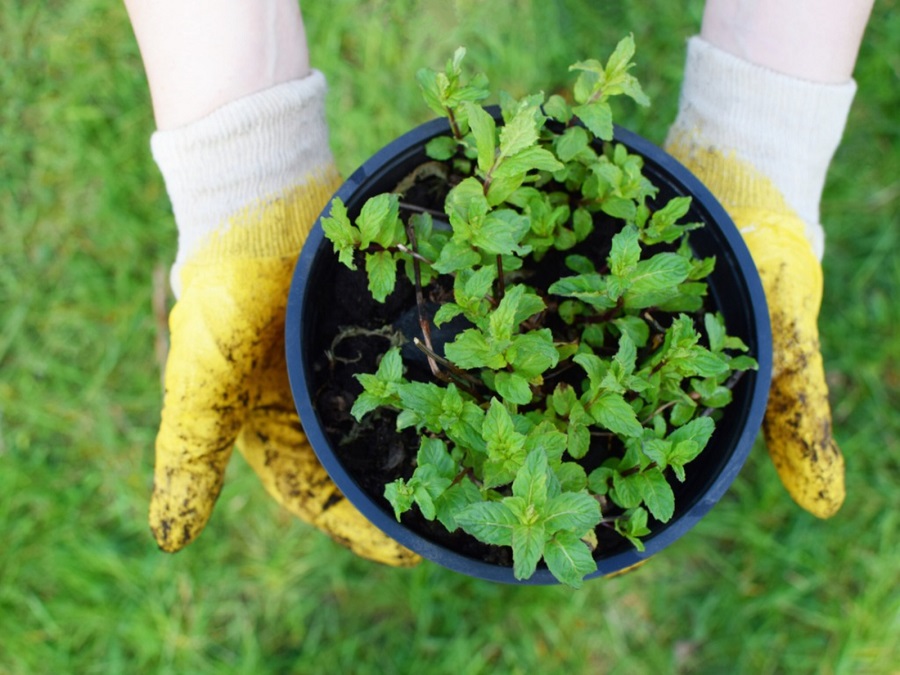
Wie vermehrt man eine Minzpflanze?
Es gibt zwei Arten der Vermehrung von Minzpflanzen. Bewurzelungsschnitte sind die beliebteste Methode. Alternativ können Sie auch Minzsamen verwenden.
Viele Menschen werfen ihre Minzpflanzen nach einer Saison weg, um dann eine neue zu kaufen. Wie sich herausstellt, kann man Minze als mehrjährige Pflanze halten. In diesem Fall ist die Überwinterung wichtig - stellen Sie sie an einen kühlen Ort und gießen Sie sie von Zeit zu Zeit. Im Winter stirbt der obere Teil der Minze ab. Aber das ist ganz natürlich - machen Sie sich keine Gedanken darüber.
Minzpflanze - die häufigsten Krankheiten
Eine im Container gezogene Minzpflanze ist eine recht robuste Pflanze, so dass Krankheiten selten sind. Das heißt aber nicht, dass sie überhaupt nicht auftreten. Am häufigsten treten Pilzkrankheiten auf - vor allem Pulvermehltau. Wie kann man ihn erkennen? Vielleicht bemerken Sie weißes Pulver auf den Blättern und Stängeln. Sie können die Pflanze vor dieser Gefahr schützen. Die Krankheit ist eine Folge von zu häufigem Gießen. Achten Sie auf eine maßvolle Bewässerung - die Erde sollte feucht sein, aber nicht übermäßig bewässert werden.
Minzpflanzen, die auf Balkonen gehalten werden, können den so genannten Rost entwickeln. Dabei handelt es sich um eine andere Art von Pilz, die aber nicht durch Gießen verursacht wird. Die Infektion wird durch den Wind verbreitet. Woran erkennt man Rost an einer Minzpflanze? Die oberen Teile der Blätter sind leicht gelb, die unteren grob. Wenn Sie dieses Problem bemerken, muss die Minze leider in den Müll wandern.
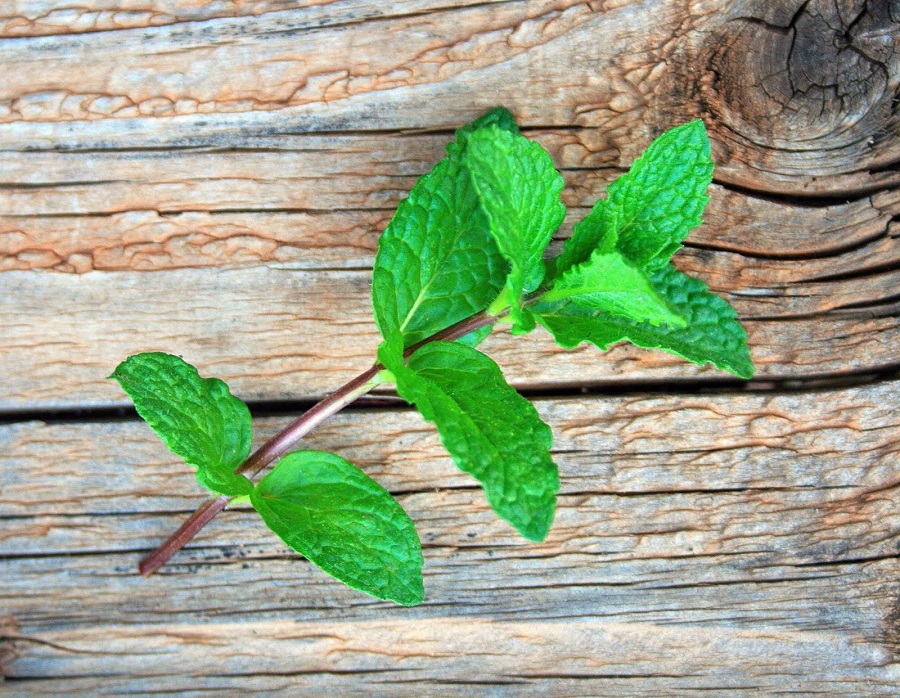
📍 Wie pflegt man eine Minzpflanze?
Zur Pflege der Minze gehört der richtige Standort - im Halbschatten. Die Pflanze braucht außerdem einen feuchten Boden. Sie können von Zeit zu Zeit Vermicompost verwenden. Der richtige Schnitt ist ein weiterer wichtiger Aspekt.
📍 Wo kann man getopfte Minze kaufen?
Getopfte Minze gibt es praktisch in jedem Supermarkt. Es wird jedoch empfohlen, Setzlinge in einer Gärtnerei zu kaufen. Auf diese Weise können Sie sicher sein, dass die Pflanze gesund ist.
📍 Wie bewässert man Minzpflanzen in einem Behälter?
Die Erde im Behälter sollte ständig feucht sein. Achten Sie darauf, die Minzpflanze regelmäßig zu gießen - sogar jeden Tag. Im Winter können Sie die Blätter besprühen, wenn die Luft trocken ist.
📍 Wie viel kostet eine getopfte Minzpflanze?
Eine Minze im Topf ist nicht teuer. Je nach Sorte, die Sie auswählen, können Sie zwischen 3 und 5 Euro einplanen.
Empfohlene Artikel




